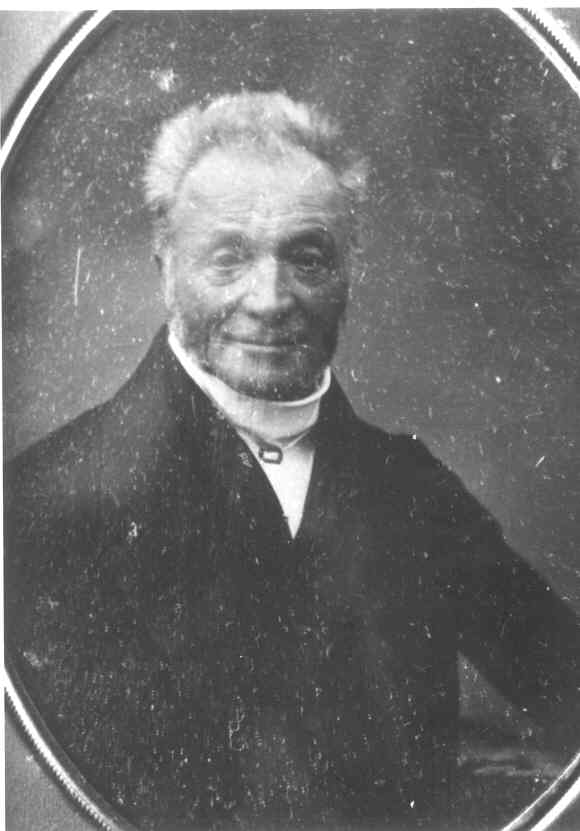| |
James Moore Graham
 |

sister: Margaret Graham Davidson |
|

From left: JMG's sister Charlotte Graham, John Moore
Graham's son (?), Dr James Moore Graham, Bessie Graham [JMG's youngest
child], Mary (Christie) Graham [JMG's wife], Liz and John Moore Graham [JMG's
eldest son & wife].
|
|
Elizabeth Wemyss 1837 |
James Moore GRAHAM
b.13 Aug.1784 Fermanagh, Ireland; died Cupar, Fifeshire, Scotland.
Eldest son of John GRAHAM and Ann MOORE.
Licentiate
College of Surgeons Dublin
22 July 1806. Apprenticed
to Dr George Stewart former President (1792) of Royal College of Surgeons,
for 5 years from 7 Jan.1801. Asst Surgeon 31st Foot 9 July 1807. Staff
Hospital Assistant, Cork
(London
Gazette). 9 July 1807
Commissioned Asst Surgeon 31st F. Resigned 2nd Batt. 31st Regt to Lt Col.
Campbell, Limerick 31 March 1808, due to "some family arrangements that have recently taken place.... I find I
cannot longer retain my situation.." [PRO CO031/251]
|
| |
Mary Christie's parents were Andrew Christie and Margaret Dempster
Joined S.Down Militia - moving around Ireland
and south coast of England.
The surgeon of the 34th or Fifeshire Militia (Robert Menzies) died 23 June 1813, and on 25 Apr. 1814 JMG was transferred to
it from the S.Down. He arrived in Cupar on his birthday 13 August 1814. G.P. in Cupar, "the
Hunting Doctor" with an "immense" practice including the
"principal families", and also popular with the poor "instead of accepting remuneration he
actually gave money to purchase the medicines he prescribed... ..to his dying
day a whole band of pensioners were in the habit of coming to his house for
their weekly allowance". Obit. Fifeshire Journal 25 May 1865.
Three generations by Henrietta
Keddie, John Murray, 1911, describes Cupar life, and how as a child she
witnessed:
†"The chief of the revellers was an
Irishman who had been an army surgeon.... brought from the brilliant
Dublin of those days and from his rollicking,
adventurous camp life many reminiscences of wild escapades and marvellous
child's play. He stood at the moment to which I refer the centre of an
admiring group of his host and hostess, their guests, and as many of their
servants as could contrive to steal up and station themselves by the open
dining-room door in order to have a part in the play. He was without his
coat. To the back of his waistcoat was pinned a bunch of strips of paper
which he had carefully cut and curled into an imitation of a lady's cluster
of ringlets. My father and another man were stationed ready, a hand of each
fastened behind his back, the other hand holding a tall candlestick with a
lit candle. A path was cleared around the central table, and to the challenging
air of a distractingly lively jig, which the performer sang with mocking
emphasis in a fine brogue, he danced around the table.... The present hero
was pursued frantically by the two candle-bearers, whose task it was to light
the paper ringlets fluttering exasperatingly in time to the mad tune of the
capering dancer. It is hardly necessary to say the feat was not accomplished,
while the audience shouted with laughter, the children screamed and clapped
their hands in their glee, and my mother's carpet was in danger of being
converted to a sea of candle grease. God rest you merry dancer; you have lain
in your grave for half a century, but while you lived you did not forget
earlier ties! When more strenuous times came, you stood with loyal kindness
by the children of your old friends". [pp.153-4] Dr David
W.W.Hendry identifies "the reveller" as Dr James Moore Graham in
his book Cupar doctors, 1992.
[The
authorís childhood home was two houses away from the Grahamsí:1851 census.]
JMG retired from practice 1855, died Cupar 19 May 1865.
Memorial stained glass window old Cupar church. Survived by 4 sons and 2
daughters.
|


